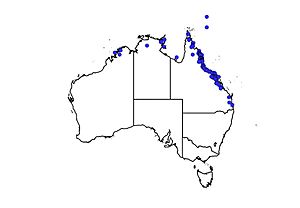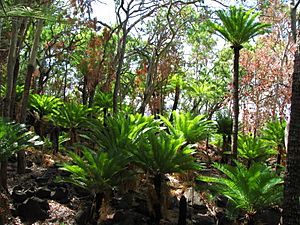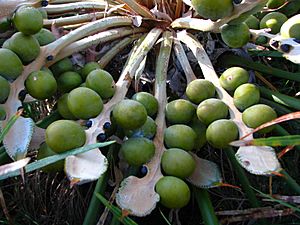Cycas media facts for kids
Quick facts for kids Cycas media |
|
|---|---|
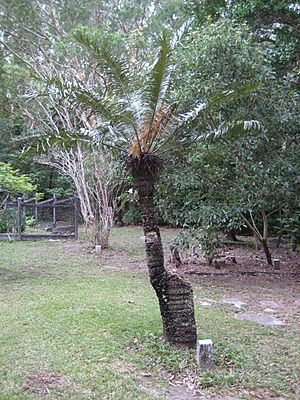 |
|
| Scientific classification | |
| Genus: |
Cycas
|
| Species: |
media
|
Cycas media is a special type of plant that looks a bit like a palm tree. It grows cones, just like pine trees do! You can find it mostly along the east coast of Queensland, Australia. Some are also found in the Northern Territory and Western Australia. This plant loves places with dry seasons, like the woodlands there.
Its leaves are dark green, thick, and feel a bit like leather. They grow in a special way, coming out all at once each year from the top of the plant. Cycas media is very tough. It can survive bushfires and often grows new leaves right after a fire, even before the next rainy season starts.
It's important to know that all parts of this plant are very poisonous. However, Aboriginal Australians learned how to prepare the seeds very carefully. They would remove the toxins so the seeds could be eaten safely.
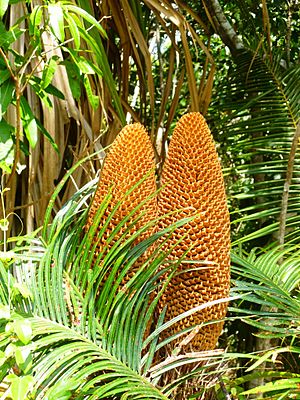
Traditional Uses of Cycas media
For a very long time, Cycas media was an important food source for Aboriginal Australians. They called the plant "Baveu" in some parts of Central Queensland. Even though the plant is poisonous, they had special ways to make the seeds safe to eat.
How the Seeds Were Prepared
The preparation process was long and careful. First, the soft outer layer of the nuts was removed. Then, the hard kernels inside were broken open. After that, the kernels were roughly crushed and dried in the sun for a few hours.
Next, the dried kernels were put into a dilly-bag. This bag was then placed in a stream or pond. The kernels stayed in running water for four or five days. If the water was still, they stayed for three or four days. People would check them with their fingers to know when they were soft enough.
Finally, the softened kernels were ground into a fine paste. This was done using two stones, similar to how flour is made. The paste was then baked under ashes, much like how "damper" bread is cooked. This careful process removed the toxins and made the seeds safe to eat.
See also
 In Spanish: Cycas media para niños
In Spanish: Cycas media para niños


